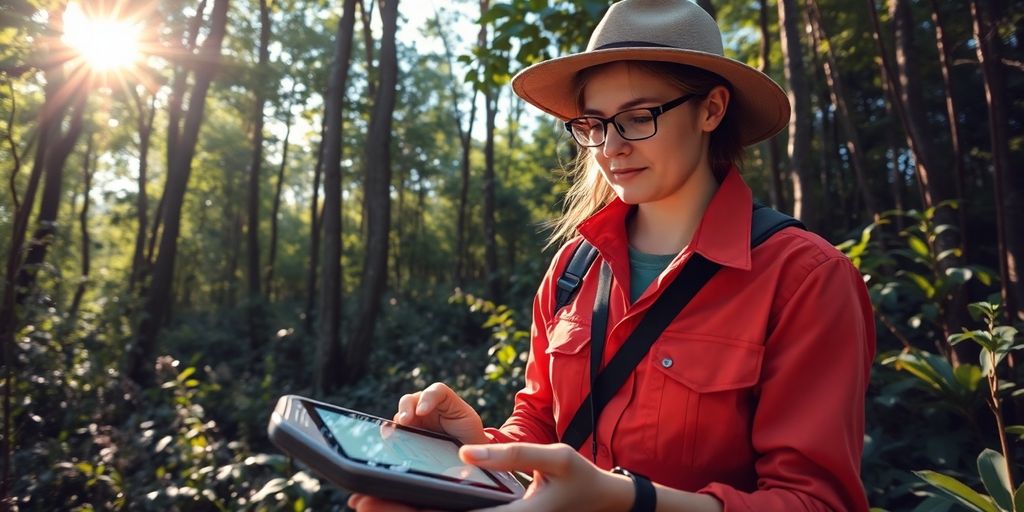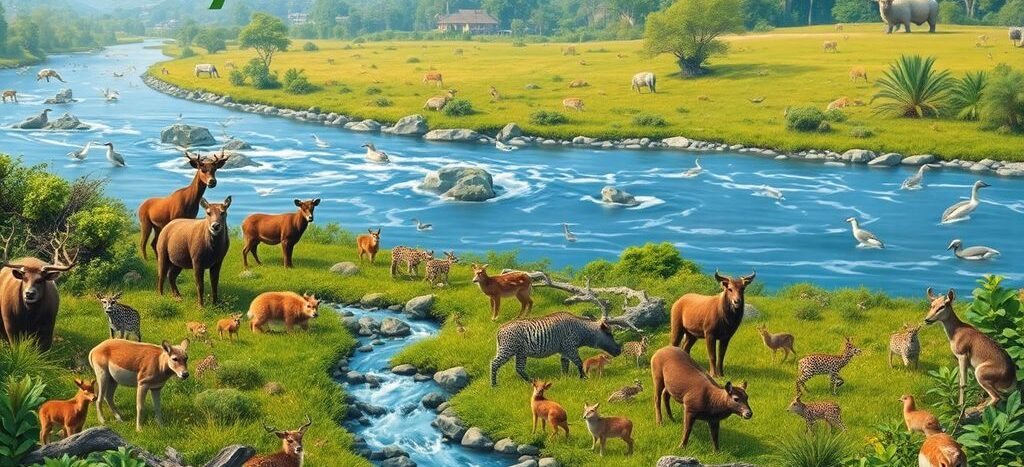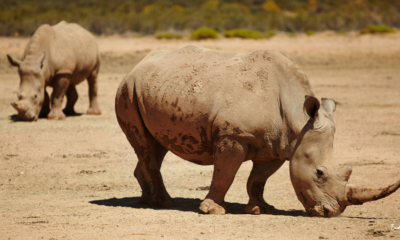Animals
Animal Conservation Efforts: Driving Innovation in Wildlife Protection

Animal conservation is a vital area of concern that is evolving rapidly. Innovative methods and technologies are being embraced to protect wildlife and their habitats. This article explores various strategies that are driving these advancements, highlighting how communities, technology, and policy changes are working together to create a brighter future for our planet’s animals.
Key Takeaways
- Technology plays a crucial role in monitoring and protecting wildlife.
- Community involvement is essential for successful conservation efforts.
- Collaboration among researchers leads to better conservation practises.
- Digital tools are enhancing education and awareness about wildlife protection.
- Innovative funding sources are crucial for sustaining conservation projects.
Innovative Approaches in Animal Conservation Efforts
Utilising Technology for Wildlife Monitoring
In recent years, technology has become a game-changer in wildlife conservation. Innovative tools like drones and camera traps allow researchers to monitor animal populations more effectively. These technologies help in:
- Tracking animal movements
- Collecting data on habitat use
- Identifying threats to wildlife
Community-Led Conservation Initiatives
Community involvement is crucial for successful conservation. Local people often have the best knowledge of their environment. Some effective community-led initiatives include:
- Establishing protected areas
- Promoting sustainable practises
- Educating others about wildlife protection
Engaging communities not only helps protect wildlife but also fosters a sense of ownership and responsibility towards nature.
Collaborative Research and Training
Collaboration among various stakeholders enhances conservation efforts. By sharing knowledge and resources, organisations can:
- Develop better strategies for wildlife protection
- Train local conservationists
- Conduct joint research projects
This teamwork is essential for addressing the complex challenges faced by wildlife today. Innovative partnerships can lead to more effective solutions and greater impact in conservation efforts.
The Role of Digital Innovation in Wildlife Protection
Digital Tools for Anti-Poaching
Digital technology plays a crucial role in the fight against poaching. Innovative tools such as drones, GPS tracking, and camera traps help monitor wildlife and detect illegal activities. These tools allow conservationists to:
- Track animal movements in real-time.
- Identify poaching hotspots.
- Gather data for better decision-making.
Online Platforms for Conservation Education
The internet has opened up new avenues for conservation education. Online platforms provide resources and training for individuals and communities. Key benefits include:
- Access to educational materials.
- Opportunities for virtual workshops.
- Community engagement through social media.
Data-Driven Conservation Strategies
Using data effectively can transform conservation efforts. By analysing data, organisations can:
- Identify trends in wildlife populations.
- Allocate resources more efficiently.
- Measure the impact of conservation initiatives.
Digital innovation is not just about technology; it’s about connecting people and nature in meaningful ways.
In summary, digital tools are reshaping wildlife protection, making it more effective and inclusive. As we embrace these innovations, we can better protect our planet’s precious wildlife.
Community Engagement in Conservation Efforts
Empowering Local Communities
Communities play a crucial role in wildlife conservation. By involving local people, we can create sustainable solutions that benefit both wildlife and humans. Here are some key points:
- Education: Teaching communities about the importance of wildlife.
- Involvement: Engaging locals in conservation projects.
- Support: Providing resources to help communities thrive alongside wildlife.
Sustainable Livelihoods and Wildlife Protection
Creating sustainable livelihoods is essential for conservation. When communities have stable incomes, they are less likely to harm wildlife. Some strategies include:
- Eco-tourism: Encouraging visitors to experience nature responsibly.
- Sustainable farming: Promoting practises that protect habitats.
- Crafts and products: Supporting local artisans to create wildlife-themed goods.
Conflict Resolution Between Humans and Wildlife
Conflicts can arise when wildlife and humans share the same space. Addressing these issues is vital for peaceful coexistence. Effective methods include:
- Community meetings: Discussing concerns and solutions together.
- Compensation schemes: Offering financial support for losses caused by wildlife.
- Barrier methods: Using fences or other tools to keep wildlife away from crops.
Engaging communities in conservation efforts not only protects wildlife but also fosters a sense of ownership and responsibility towards nature.
By focusing on these areas, we can build a future where both wildlife and communities thrive together.
Highlight: The importance of community involvement in conservation efforts is clear.
Protecting Endangered Species Through Conservation
Success Stories of Species Recovery
Many species have shown remarkable recovery due to dedicated conservation efforts. Successful interventions have led to the revival of populations that were once on the brink of extinction. Here are a few notable examples:
- California Condor: From just 27 individuals in the 1980s to over 500 today, thanks to captive breeding and habitat protection.
- Grey Wolves: Reintroduction in Yellowstone National Park has restored ecological balance and increased biodiversity.
- Giant Panda: Conservation efforts have increased their population, allowing them to be reclassified from endangered to vulnerable.
Challenges in Protecting Lesser-Known Species
While high-profile species often receive attention, many lesser-known species face severe threats. Some challenges include:
- Habitat Loss: Urbanisation and agriculture are destroying natural habitats.
- Climate Change: Altered weather patterns affect food sources and breeding.
- Illegal Wildlife Trade: Many species are hunted for their parts, often without public awareness.
Role of Zoos and Sanctuaries
Zoos and sanctuaries play a crucial role in conservation. They not only provide safe havens for endangered species but also contribute to education and research. Their roles include:
- Captive Breeding: Breeding endangered species to increase population numbers.
- Public Education: Raising awareness about conservation issues and inspiring action.
- Research: Conducting studies that inform conservation strategies and improve animal welfare.
Protecting endangered species is not just about saving animals; it’s about preserving the biodiversity that sustains our planet. In 2024, significant advancements and ongoing challenges in global conservation efforts for endangered species are highlighted, with approximately one million species at risk, prompting renewed focus on conservation strategies.
Restoring Ecosystems for Wildlife Conservation

Habitat Restoration Projects
Restoring ecosystems is crucial for wildlife conservation. Healthy ecosystems support diverse life forms and help maintain balance in nature. Here are some key projects:
- Reforestation efforts to restore tree cover.
- Wetland restoration to improve water quality.
- Grassland recovery to support native species.
Impact of Climate Change on Ecosystems
Climate change poses a significant threat to ecosystems. It can lead to:
- Altered habitats that affect species survival.
- Increased frequency of extreme weather events.
- Loss of biodiversity as species struggle to adapt.
Collaborations for Ecosystem Recovery
Working together is essential for effective ecosystem recovery. Successful collaborations often include:
- Local communities who understand the land.
- Governments providing support and resources.
- NGOs that bring expertise and funding.
Restoring ecosystems not only benefits wildlife but also enhances the quality of life for local communities. By working together, we can create a sustainable future for both people and nature.
In summary, restoring ecosystems is vital for wildlife conservation. By focusing on habitat restoration, understanding climate impacts, and fostering collaborations, we can make a significant difference in protecting our planet’s biodiversity.
Training and Capacity Building in Conservation
Workshops and Courses for Conservationists
Training is essential for effective conservation. Workshops cover vital topics such as sustainable land use, water resource management, biodiversity conservation, and climate change adaptation. These sessions help equip conservationists with the necessary skills to tackle pressing environmental issues.
- Key Topics Covered:
- Wildlife rescue techniques
- Safe animal handling practises
- Human-wildlife conflict resolution
Building Skills for Wildlife Rescue
Hands-on training is crucial for those involved in wildlife rescue. Participants learn:
- Identification of various species
- Emergency response strategies
- Rehabilitation techniques for injured animals
Global Training Initiatives
Many organisations are now focusing on global training initiatives to enhance conservation efforts. These initiatives aim to:
- Share knowledge across borders
- Foster collaboration among conservationists
- Develop a unified approach to wildlife protection
Training and capacity building are not just about knowledge; they are about empowering individuals to make a difference in wildlife conservation.
By investing in training, we can ensure that conservationists are well-prepared to face the challenges ahead and protect our planet’s precious wildlife.
Policy and Legislation in Wildlife Conservation
International Wildlife Protection Laws
International laws play a crucial role in safeguarding wildlife across borders. These laws help ensure that endangered species are protected globally. Some key agreements include:
- CITES (Convention on International Trade in Endangered Species): Regulates international trade of endangered species.
- Biodiversity Convention: Aims to conserve biological diversity and promote sustainable use of its components.
- Ramsar Convention: Focuses on the conservation of wetlands, crucial for many species.
National Policies for Conservation
Countries implement their own laws to protect wildlife. These policies can vary widely but often include:
- Protected Areas: Establishing national parks and reserves to conserve habitats.
- Endangered Species Acts: Laws that provide specific protections for threatened species.
- Wildlife Management Plans: Strategies to manage and conserve wildlife populations effectively.
Role of NGOs in Policy Advocacy
Non-Governmental Organisations (NGOs) are vital in shaping wildlife conservation policies. They:
- Advocate for stronger laws and regulations.
- Raise public awareness about conservation issues.
- Collaborate with governments to implement effective conservation strategies.
The success of wildlife conservation efforts often hinges on effective policy and legislation, which must be supported by the communities that live alongside wildlife.
In summary, robust policies and laws are essential for the protection of wildlife. They not only provide a framework for conservation but also empower communities to engage in sustainable practises that benefit both people and wildlife. Understanding these laws is key to driving effective conservation efforts.
Technological Advancements in Marine Conservation
Marine Mammal Rescue Techniques
Recent advancements in marine mammal rescue techniques have significantly improved the survival rates of stranded animals. Innovative methods have been developed to ensure that these creatures receive timely and effective care. For instance:
- Use of drones for aerial surveillance to locate stranded mammals.
- Development of specialised equipment for safe transport and rehabilitation.
- Training programmes for volunteers and professionals in rescue techniques.
Monitoring Marine Biodiversity
Technology plays a crucial role in monitoring marine biodiversity. Various tools and methods are now employed to gather data on marine life, including:
- Underwater drones that capture high-resolution images of marine habitats.
- Acoustic monitoring devices to track the sounds of marine species.
- Satellite imaging to assess changes in oceanic environments.
| Technology Type | Purpose | Example Use Case |
|---|---|---|
| Underwater Drones | Habitat mapping | Coral reef assessments |
| Acoustic Monitors | Species tracking | Monitoring whale populations |
| Satellite Imaging | Environmental changes | Tracking ocean temperature variations |
Addressing Marine Pollution
Technological innovations are also being utilised to combat marine pollution. Key strategies include:
- Bioremediation techniques that use microorganisms to clean up oil spills.
- Development of smart buoys that monitor water quality in real-time.
- Use of AI algorithms to predict pollution patterns and inform response strategies.
The integration of technology in marine conservation is not just about saving species; it’s about creating a sustainable future for our oceans and the life they support.
By embracing these advancements, we can enhance our efforts in protecting marine ecosystems and ensure a healthier planet for future generations.
Innovative Funding Mechanisms for Conservation
Crowdfunding for Wildlife Projects
Crowdfunding has emerged as a powerful tool for financing wildlife conservation. This method allows individuals to contribute directly to projects they care about. Here are some key points about crowdfunding:
- Engagement: It connects people with conservation efforts.
- Diversity of Projects: Supports various initiatives, from habitat restoration to anti-poaching efforts.
- Global Reach: Enables projects in remote areas to gain funding.
Corporate Partnerships in Conservation
Corporate partnerships are becoming increasingly important in conservation funding. Companies are recognising their role in protecting the environment. Some benefits include:
- Financial Support: Corporations can provide significant funding.
- Resources: Access to technology and expertise.
- Branding: Companies enhance their image by supporting conservation.
Government Grants and Support
Government grants play a crucial role in sustaining conservation efforts. They provide essential funding for long-term projects. Key aspects include:
- Stability: Grants offer reliable funding sources.
- Research Support: Funding for scientific studies and data collection.
- Community Projects: Encouragement of local initiatives that benefit wildlife.
Innovative funding mechanisms are vital for the future of conservation. They not only provide financial resources but also foster community involvement and corporate responsibility.
| Funding Mechanism | Key Benefits |
|---|---|
| Crowdfunding | Direct engagement, diverse projects |
| Corporate Partnerships | Financial support, resources |
| Government Grants | Stability, research support |
The Future of Animal Conservation Efforts
Emerging Trends in Conservation
The future of animal conservation is bright, with new methods emerging to protect wildlife. Conservationists are increasingly using technology to monitor animal populations and habitats. This includes:
- Drones for aerial surveys
- Camera traps for monitoring wildlife
- Mobile apps for reporting sightings
Future Challenges and Opportunities
Despite the progress, challenges remain. Climate change, habitat loss, and poaching continue to threaten wildlife. However, these challenges also present opportunities for innovation. For instance, community-led initiatives can empower locals to take charge of conservation efforts.
Innovative Solutions for Wildlife Protection
One exciting development is the establishment of programmes that offer hands-on educational and conservation opportunities through camps, internships, afterschool programmes, 1:1 mentorship, and more. These initiatives not only educate but also inspire the next generation of conservationists. The future of conservation relies on our ability to adapt and embrace change. By working together, we can create a sustainable world for both wildlife and humans.
In summary, the future of animal conservation will be shaped by collaboration, technology, and community engagement. By harnessing these elements, we can ensure a thriving planet for all species.
Human-Wildlife Coexistence Models
Successful Coexistence Case Studies
Many communities around the world have found ways to live alongside wildlife. These successful coexistence models show that it is possible to share spaces with animals while ensuring safety and sustainability. Here are a few examples:
- Community-led initiatives that promote wildlife-friendly farming practises.
- Education programmes that teach locals about the benefits of biodiversity.
- Wildlife corridors that allow animals to move safely between habitats.
Developing Coexistence Strategies
To create effective strategies for coexistence, it is essential to:
- Engage local communities in conservation efforts.
- Implement conflict resolution methods to address human-wildlife interactions.
- Monitor wildlife populations to understand their behaviour and needs.
Community-Based Wildlife Management
Community involvement is crucial for the success of wildlife management. By empowering locals, we can:
- Reduce human-wildlife conflict through education and awareness.
- Create sustainable livelihoods that benefit both people and wildlife.
- Foster a sense of ownership and responsibility towards local ecosystems.
Engaging communities in conservation efforts is vital for the future of wildlife recovery. When people feel connected to their environment, they are more likely to protect it.
In conclusion, the coexistence between wildlife and humans is not just a dream; it can be a reality through innovative strategies and community involvement. By working together, we can create a harmonious balance that benefits both species.
Conclusion
In summary, the efforts to conserve wildlife are not just about saving animals; they are about embracing change and innovation. By sharing knowledge and techniques, we can improve survival rates and ensure that every challenge becomes a chance to learn and grow. As we face new obstacles, it is crucial to adapt and work together, creating a network of dedicated individuals ready to protect our planet. The future of wildlife conservation relies on our ability to welcome change and act decisively. Together, we can create a world where both animals and humans thrive.
Frequently Asked Questions
What are some new methods being used in animal conservation?
There are many exciting new methods in animal conservation, such as using technology to track animals, involving local communities in protecting wildlife, and working together with researchers to share knowledge.
How does technology help protect wildlife?
Technology helps protect wildlife by providing tools for monitoring animal populations, preventing poaching, and educating people about conservation.
Why is community involvement important in conservation?
Community involvement is crucial because local people often know the land best. When they are part of conservation efforts, they can help protect wildlife and create sustainable ways to live alongside them.
What challenges do endangered species face?
Endangered species face many challenges, including habitat loss, climate change, and poaching. These threats make it hard for them to survive and recover.
How can we restore ecosystems for wildlife?
Restoring ecosystems can involve planting trees, cleaning up polluted areas, and creating protected spaces where wildlife can thrive.
What kind of training do conservationists need?
Conservationists need training in various areas, including animal rescue techniques, understanding ecosystems, and working with communities to promote wildlife protection.
What laws exist to protect wildlife?
There are many laws at local, national, and international levels that protect wildlife. These laws help prevent illegal hunting and trade and promote conservation efforts.
How can I support wildlife conservation efforts?
You can support wildlife conservation by donating to organisations, volunteering your time, spreading awareness about conservation issues, and making eco-friendly choices in your daily life.
-

 Press Release6 days ago
Press Release6 days agoCV5 Capital Announces Standout Performance of Cryptanium Fund I SP, Beating Industry Benchmarks
-

 Government7 days ago
Government7 days agoExperts Warn of U.S. Slide Towards Authoritarianism Under Trump Administration
-

 Business3 days ago
Business3 days agoS&P 500 Soars in Best May in Decades Amid Tariff Relief and Nvidia’s Surge
-

 Healthcare5 days ago
Healthcare5 days agoAttention Economy Arms Race: Reclaim Your Focus in a World Designed to Distract You
-

 Immigration3 days ago
Immigration3 days agoTrump’s Immigration Crackdown: Legal Battles and Policy Shifts
-

 Business3 days ago
Business3 days agoUS Stock Market Soars in May Amidst Tariff Tensions and Inflation Worries
-

 Government4 days ago
Government4 days agoTrump Administration’s Government Reshaping Efforts Face Criticism and Legal Battles
-

 Business4 days ago
Business4 days agoTrump’s Tariffs: A Global Economic Reckoning
















